How to make Chinese mugwort rice cake
To flavor the rice cake, Chinese mugwort (Artemisia argyi) is used:
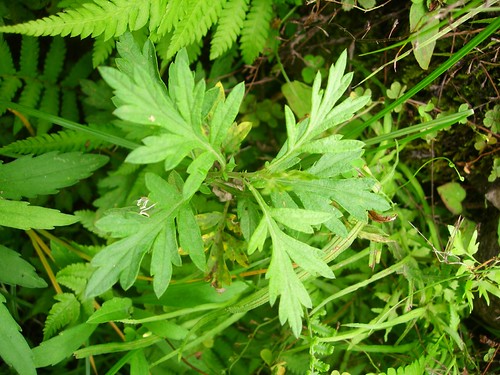
The mugwort leaves should be cleaned...
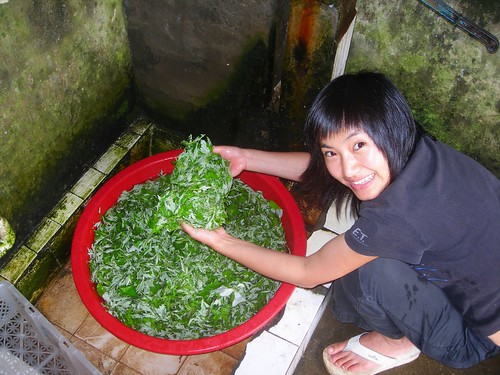
...and then boiled:
![Boiling mugwort leaves [Mama]](http://farm2.static.flickr.com/1039/638277030_8eb4e7afb3.jpg)
Wringing the boiled leaves will then remove the bitter sap contained within the plant.
Lye water must now be prepared. Lye water is important for three reasons: 1) to partially digest the mugwort leaves to make them easier to knead into the dough; 2) to serve as a preservative; 3) to act as a flavoring agent. In Fuzhou, soybean ash is preferentially used, but since this is generally in short supply, rice stalk ash is often used instead. Large piles of rice stalk are burned after the harvest and the resulting ash is stored primarily for use as fertilizer, but also for making both rice cake and zongzi later on in the year. Boiled water is poured over the ash and the lixivium is filtered through a cheesecloth. Incidentally, if you are not making rice cakes (or zongzi), the resulting brown alkaline liquid (lye water) can also be diluted with water and used as shampoo:
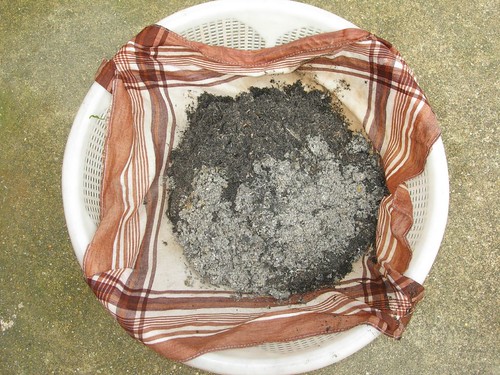
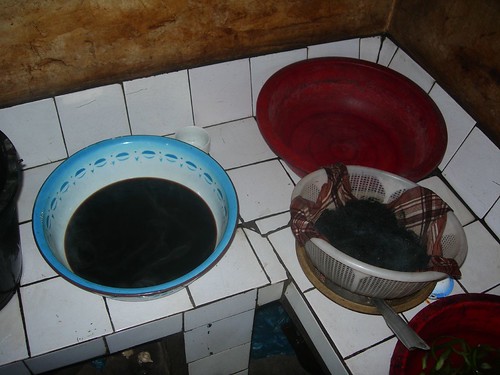
Note that lye water should NOT be consumed directly (it may burn a hole in your throat or stomach).
The mugwort leaves are now boiled in lye water until very soft and until most of the water has boiled away:
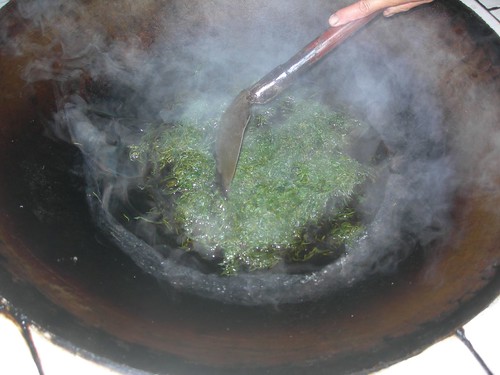
After the mugwort leaves are removed from the fire, sugar can be added to taste, and the mixture is poured into a 1:1 blend of rice flour and sticky rice flour (if you want softer and chewier rice cakes, you can increase the amount of sticky rice flour):
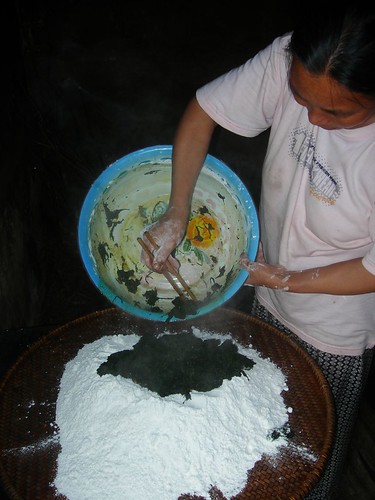
Everything should then be kneaded into a homogeneous green dough:
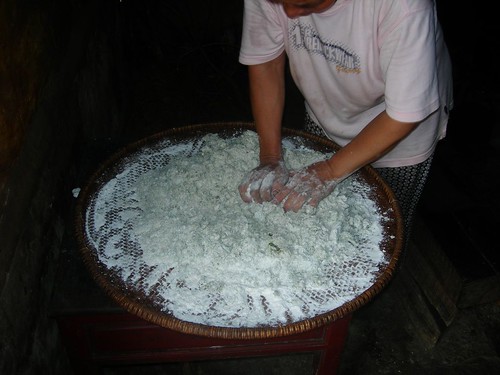
The green dough can then be fashioned into cakes...

and steamed in a cauldron:
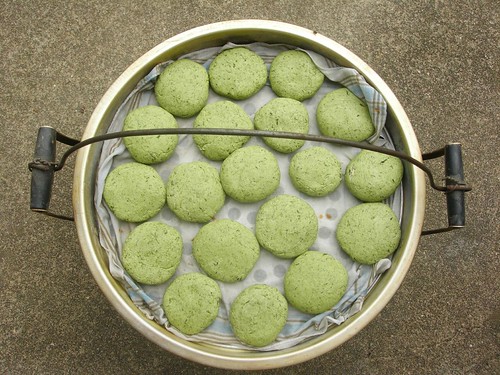
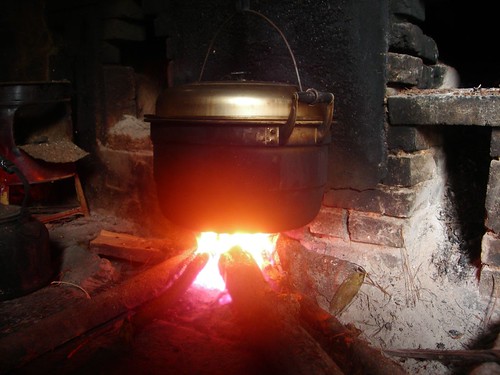
After about 30 minutes, the resulting cakes will have become dark green in color and are ready to be eaten:
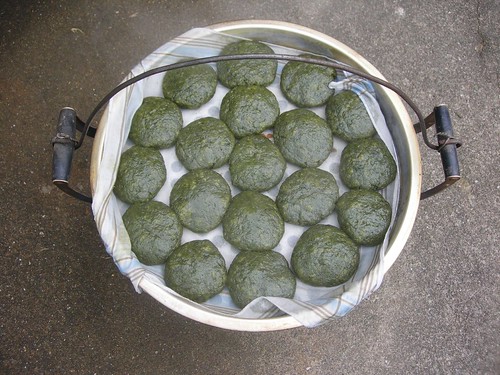
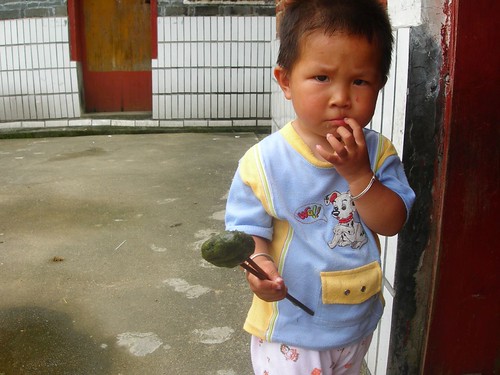

6 Comments:
Hi I live in Tokyo and would you believe that I am making this tomorrow?
It's a good thing I did some research and came across your site. Thanks for posting this. Who knew it would be so helpful?
Hello!
I couldn't resist to comment your pictures and your trip to Fuzhou: "Beautiful!"
I'am living in Shanghai and every day i dream of leaving the city and going to a place like that, doing the things you did...
Enjoy :)!
Marta
hello, I accidentally came across your blog when I was looking up mugwort and found it very interesting. I'm from fuzhou but I wasn't living the city just one of the small village under the city and what you had described sounded very familiar to me. We didn't used the ash to make the cake but I did see the rice stalk burning when I was a little kid and when my family grew the rice in the field. Anyway, it reminds me of my childhood in the countryside. Really miss that time!
By the way, what part of fuzhou did you visit?
Thanks for your sharing of making mugwort rice cake. We will try something similar here in Indonesia .. We seem not to have the exact mugwort herbs ..
相当不错的职位。我只是偶然发现您的博客和想说的话,我很喜欢浏览你的博客帖子。在任何情况下,我会订阅你的饲料,我希望你写的再次光临!
My Korean wife has been after me to find this herb. We have done so. We are in the USA in Indiana, it grows plentiful here.Thanks for the info about the rice cakes, this is exactly what we were looking to make. I did not know about the application of lye.
Post a Comment
<< Home